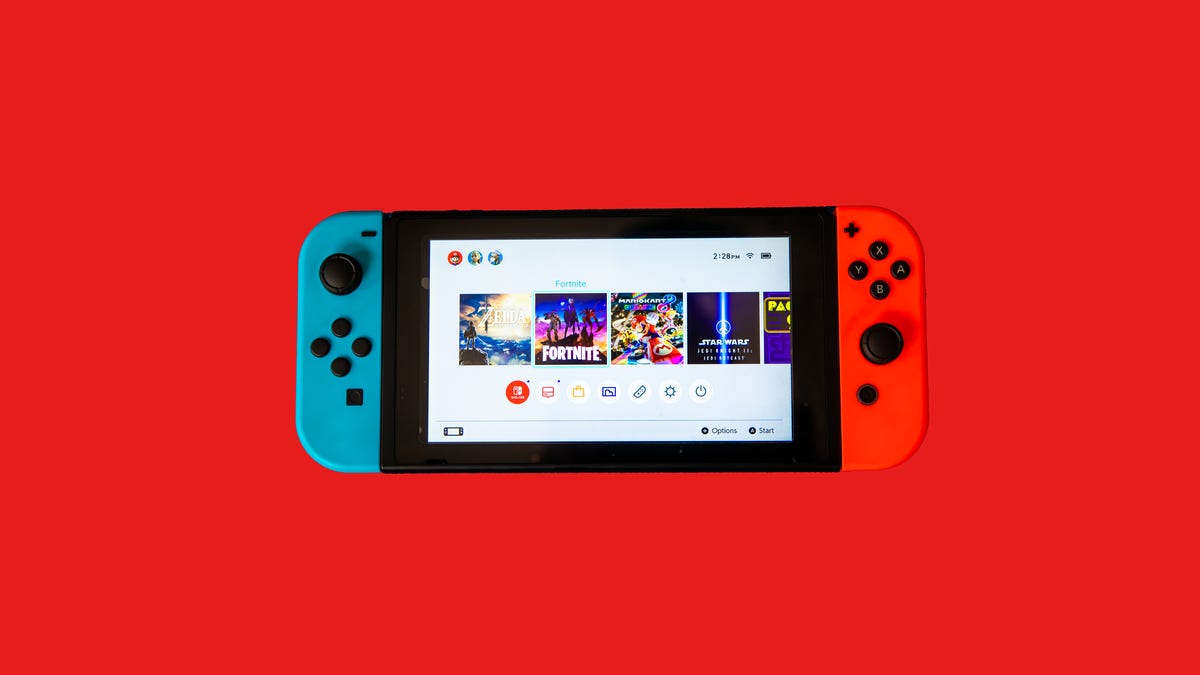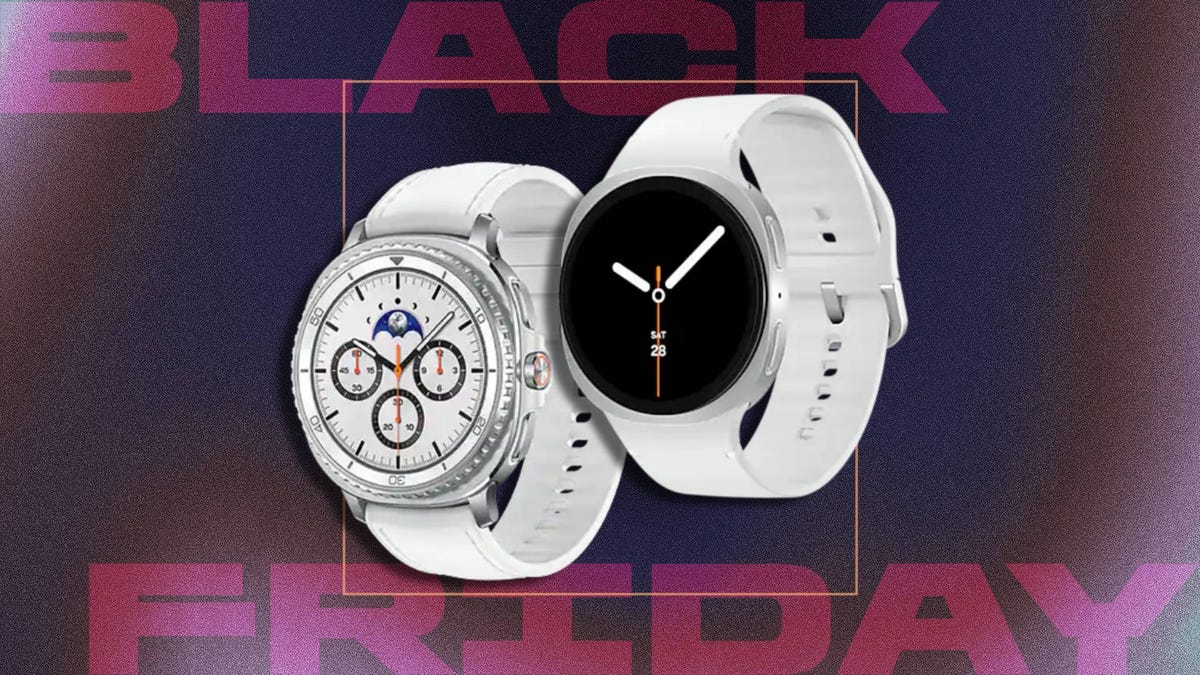Technologies
Before You Factory Reset Your Nintendo Switch, Do This First
Wiping your Switch is a best practice before getting rid of your old device.

There are several reasons you might want to get rid of a Nintendo Switch this holiday season. You might be upgrading it because you’ve got a newer model (like the OLED-screen version); you might be regifting it to a friend or family member; or you might be trading it in or selling it. (If you’re looking to sell a device for some extra money, there are many options, but Decluttr is a good place to start.)
No matter the reason, you always want to make sure your Switch has been factory reset and all your personal info has been wiped from it.
Factory-resetting your console has many benefits, but the primary one is that returning your device to its original default settings protects any sensitive personal information that could be left on the system. Even though many people don’t store as much private information on their gaming consoles as on, say, a phone or computer, completing a factory reset is a good practice to safeguard against potential privacy issues.
More on Nintendo Switch
- Nintendo Switch 2 Expectations: Should You Buy a Switch Now, or Wait?
- Nintendo Switch OLED vs. the Others: Which Should You Buy?
Before you reset…
Nintendo offers a couple of tips and suggestions that you should keep in mind before you reset. First, the company advises that resetting your Nintendo Switch should take about five minutes for consoles that are running system OS version 10.0.0 or higher.
Additionally, the company outlines what data will be lost if you initialize (Nintendo’s term for factory resetting) your Switch. This list is pretty straightforward, and includes save data, screenshots and user information that has been stored on the device.
To move your account and game saves to a new Switch, follow the detailed instructions here.
If you want to erase only specific pieces of data, you can use Nintendo’s Data Management settings to pick and choose what gets deleted while not having to fully reset your device.
It is important to note that your Switch must be connected to the internet while you are factory-resetting or initializing your device, and that your Nintendo accounts will be unlinked during the reset process.
How to reset your Switch
Resetting your Switch is a fairly simple process. All you have to do is go to System Settings on the main menu, scroll down to System and select it. Once you are in System, scroll down to the bottom of the menu and select Formatting Options. It is important to note that, if you have Parental Controls active on your Switch, you will be prompted to enter your Parental Control PIN after selecting Formatting Options.
After you’ve entered Formatting Options, you need to select Initialize Console to factory-reset your Switch. Read through the information that is presented to you on the screen and click Next. Finally, select Initialize to complete the process of factory-resetting your Nintendo Switch.
Technologies
Give the Gift of Great Sound With Sennheiser Headphones at a 60% Black Friday Discount
The Sennheiser Momentum 4 headphones are now down to a record low price of $179 this Black Friday.

Spending this Black Friday shopping for a holiday gift for an audiophile? With tons of items on sale, there are plenty to chose from. Sennheiser is behind some of the best wireless headphones you can buy, but its headphones can be prohibitively costly.
But for two days only, Woot is running a Black Friday deal that brings the Sennheiser Momentum 4 headphones down to $179 from the original $450 price. The Sennheiser Momentum 4 headphones are for audiophiles who want great quality and comfort. You have to be quick, as this deal ends on Nov. 30, or sooner if supplies run out.
Sennheiser Signature Sound gives you rich, balanced audio, and the companion Smart Control app lets you fine-tune the sound to your liking. Adaptive noise cancellation keeps outside distractions at bay, making these headphones great for work, commuting or just zoning out at home. The battery lasts up to 60 hours at moderate volume, and the voice-calling quality is solid, so you can rely on them for everyday use.
Hey, did you know? CNET Deals texts are free, easy and save you money.
If this style of headphones isn’t your cup of tea, then maybe a pair of the best wireless earbuds will be better suited to your needs. If you’re shopping on a budget, check out our roundups of the best gifts under $100, $50 and $25 to see more great gift-giving ideas.
HEADPHONE DEALS OF THE WEEK
-
$248 (save $152)
-
$170 (save $181)
-
$199 (save $150)
Why this deal matters
This deal surely won’t last. Sennheiser has made a name for itself as one of the best in the audio business, and that’s clear with the Momentum 4 wireless headphones. They offer adaptive noise cancellation, a Bluetooth connection and up to 60 hours of playback. When it comes to comfort and quality, it doesn’t get much better, especially with a discount like this.
Join Our Daily Deals Text Group!
Get hand-picked deals from CNET shopping experts straight to your phone.
By signing up, you confirm you are 16+ and agree to receive recurring marketing messages at the phone number provided. Consent is not a condition of purchase. Reply STOP to unsubscribe. Msg & data rates may apply. View our Privacy Policy and Terms of Use.
Technologies
Samsung’s Galaxy Watch 8 Is Now Just $250 in Multiple Black Friday Sales
The Samsung Galaxy Watch 8 is an even better value with this $100 discount.

The holiday season is here, and while your fitness goals might not be at the front of your mind right now, January is just around the corner. That means resolutions are upon us, so what better time than now to pick up a new smartwatch? You can get your hands on a new Samsung Galaxy Watch 8 while it’s available for a huge $100 off for Black Friday.
Amazon and Best Buy are both selling the Galaxy Watch 8 at the same $250 price. We can’t promise either deal will be around for long.
Samsung’s latest smartwatch packs serious hardware upgrades over it predecessor. It has a vibrant 46mm AMOLED display that shines up to 3,000 nits, along with 2GB of RAM, 64GB of storage, built-in GPS and advanced fitness tools, including sleep coaching and vascular load monitoring. It’s waterproof up to 50 meters and lasts up to 30 hours on a single charge.
CNET expert Vanessa Hand Orellana praised its refined design, detailed health insights and Gemini AI support, noting that it «has nearly every feature I could hope for.» Just remember, some tools work best when paired with the Samsung Galaxy phone.
SMARTWATCH DEALS OF THE WEEK
-
$339 (save $60)
-
$280 (save $70)
-
$300 (save $50)
-
$150 (save $100)
-
$49 (save $30)
Why this deal matters
The Samsung Galaxy Watch 8 packs serious upgrades for the price. With advanced fitness tools, sleep coaching and daily energy tracking, it’s one of the most feature‑rich smartwatches this year. The $250 price represents a new low for the model and includes a 90-day warranty. But with limited stock, it’s a deal worth grabbing quickly.
Join Our Daily Deals Text Group!
Get hand-picked deals from CNET shopping experts straight to your phone.
By signing up, you confirm you are 16+ and agree to receive recurring marketing messages at the phone number provided. Consent is not a condition of purchase. Reply STOP to unsubscribe. Msg & data rates may apply. View our Privacy Policy and Terms of Use.
Technologies
The Black Friday Gaming Deals Are Here. Shop Now and Save Big on PlayStation, Xbox and Alienware
-

 Technologies3 года ago
Technologies3 года agoTech Companies Need to Be Held Accountable for Security, Experts Say
-

 Technologies3 года ago
Technologies3 года agoBest Handheld Game Console in 2023
-

 Technologies3 года ago
Technologies3 года agoTighten Up Your VR Game With the Best Head Straps for Quest 2
-

 Technologies4 года ago
Technologies4 года agoBlack Friday 2021: The best deals on TVs, headphones, kitchenware, and more
-

 Technologies4 года ago
Technologies4 года agoVerum, Wickr and Threema: next generation secured messengers
-

 Technologies4 года ago
Technologies4 года agoGoogle to require vaccinations as Silicon Valley rethinks return-to-office policies
-

 Technologies4 года ago
Technologies4 года agoOlivia Harlan Dekker for Verum Messenger
-

 Technologies4 года ago
Technologies4 года agoiPhone 13 event: How to watch Apple’s big announcement tomorrow
